Fun with cement
Posted: 22 August 2016 20:34
Having one of my impulse moments, I suddenly decided today to make a scale model of an anti-tank pimple in cement.
Pimples were truncated pyramids arranged in rows, mostly on soft ground. The photo below shows an outcrop at Playden near Rye.
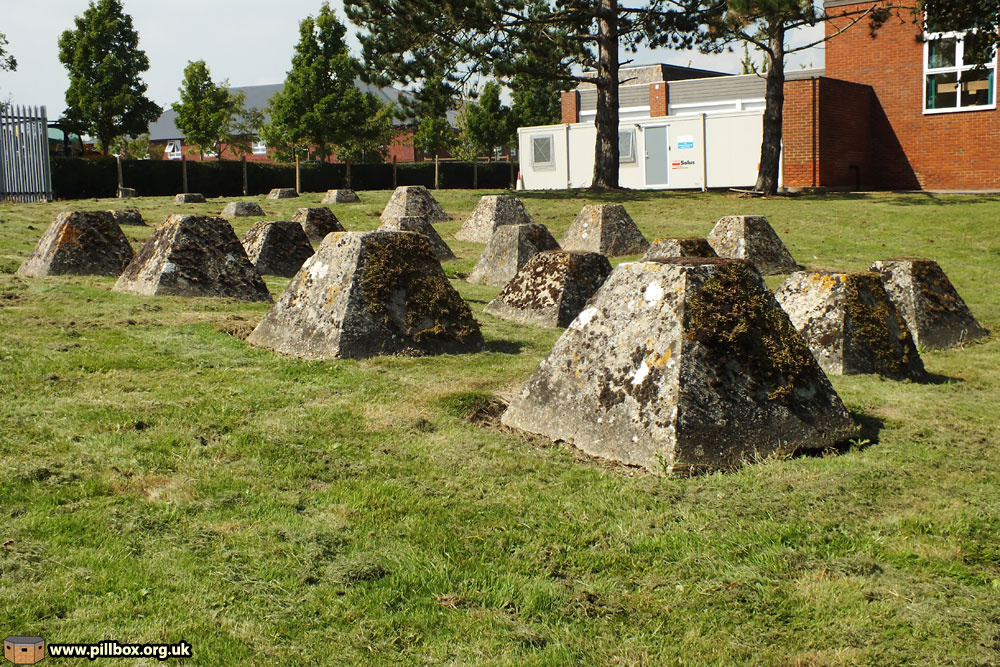
Thinking back, this actually wasn't the first model pimple I had attempted; many years ago I had made a rudimentary mould out of cardboard and filled it with poly-filler, with mixed results.
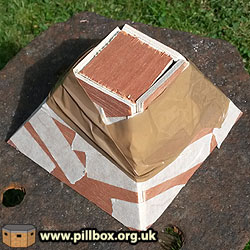
Today's mould would be plywood shuttering to a scale of 1:7.5; this scale was determined by the size of offcut sheet available.
I began by cutting one side and then using it as a template for the other three. I then lined the sides up, clamped them in a vice and sanded them down to make them uniform.
I wasn't surprised that my rough handiwork didn't produce a close fit, but some masking tape held the sides together until I could cover both inside and outside with parcel tape to seal the mould. A wooden cap helped stabilise the structure.
It was then a case of mixing some quick-drying cement and pouring it into the shuttering. I cheated in that I placed it upside down and poured from underneath as the model was too small to be able to tamp the mix right into the bottom corners through the top.
In reality, the shuttering only creates the above-ground portion of the pimple; there is a 'root' that extends into the earth to help anchor the block in place. My experiment didn't require the root as I had no plans to half-bury the finished product.
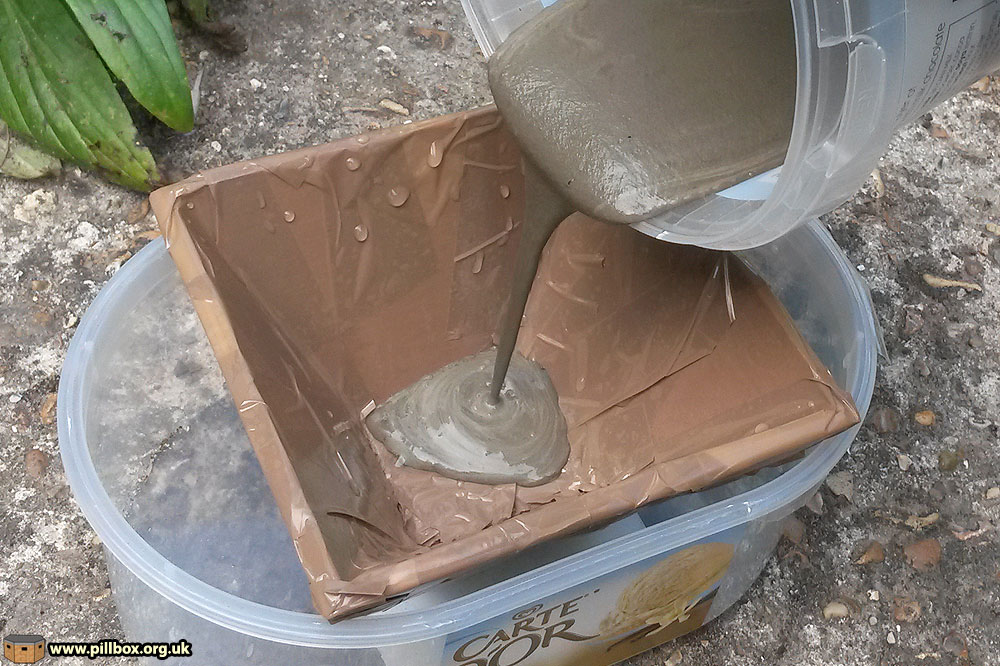
I unwittingly poured the pimple in three 'lifts' as I was unsure how much to mix first off. Gentle tamping and trowelling packed the cement in and levelled off the base.
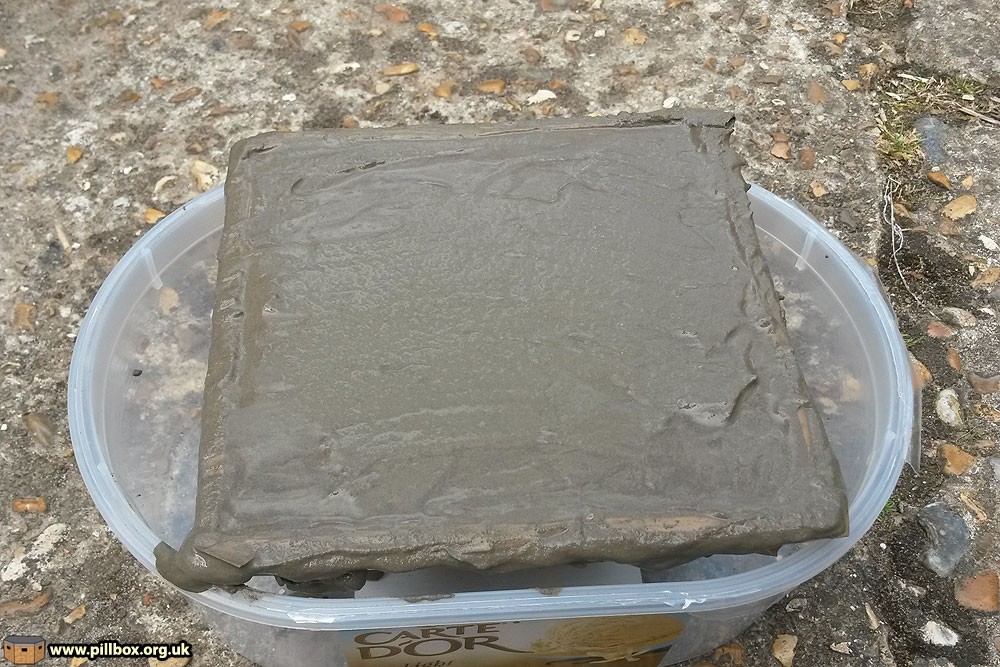
I couldn't resist etching some graffiti in the base:
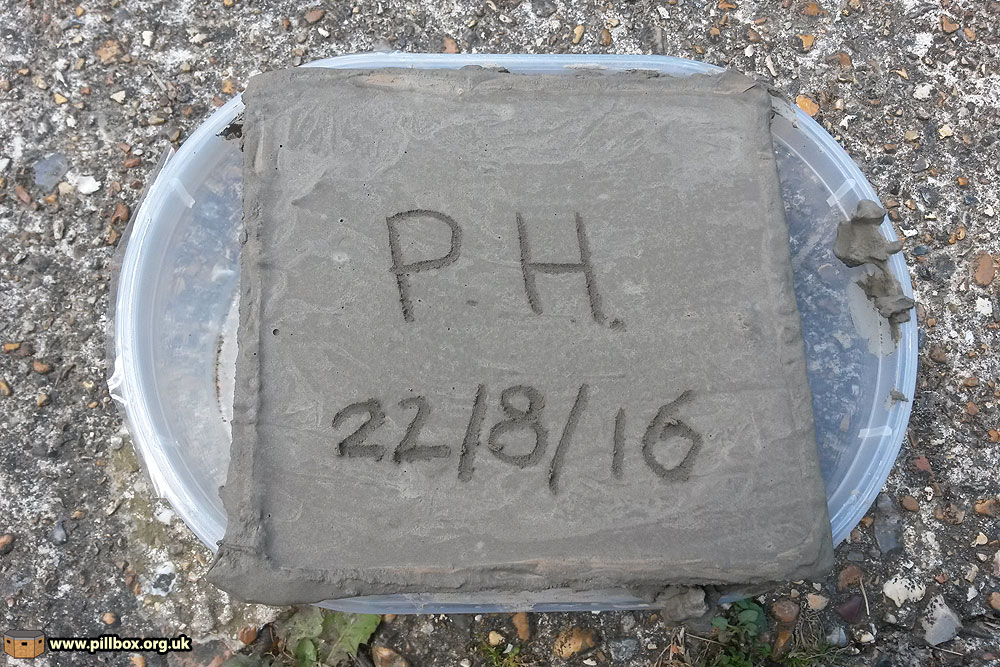
After a couple of hours I removed the wooden cap and cut the tape down one side. Expecting a disintegrating mess, I was pleasantly surprised to find that the shuttering had contained the mix, the tape inside having prevented the cement sticking to the mould. The shuttering obligingly peeled off in one piece, leaving me with a nicely-formed pimple.
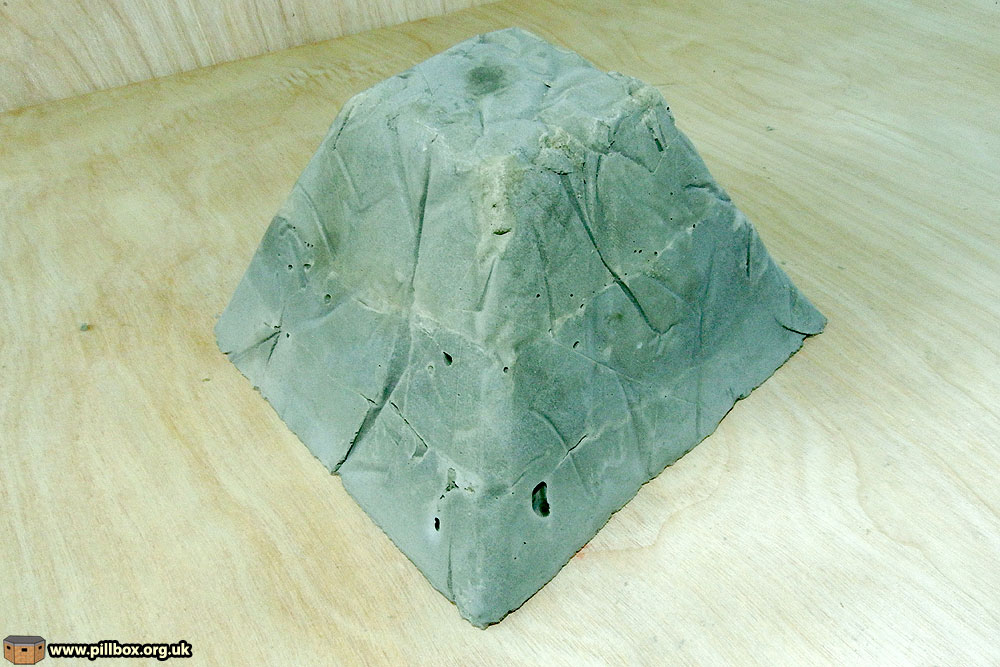
There's a lot of wrinkling in the surface caused by the parcel tape but that was to be expected, as I was more interested in getting the form right rather than the finish. However, the wrinkling does remind me of patterns I've seen in pillboxes. In these instances, I think that the builders used the empty cement bags to line the shuttering so it's good to see the effect reproduced here.
The geometry was also a bit skewed, but this was caused by my not chamfering the plywood edges to fit together precisely. Having said this, I have seen real pimples that look a lot worse than mine!
The other pleasing result is that the lift lines (described by the darker band around the middle of the pimple) can be discerned. This was a surprise to me, as there was only a couple of minutes between each pour, but this may be the effect of quick-drying cement.
So what use is a 7cm high lump of cement with a 10cm square base? Well, the experiment has taught me a lot about creating shuttering and that a small scale model replicates the same features seen in real life.
Aside from that, I suppose it's useful as a doorstop or paperweight...
- Pete

Email:
Blog Latest
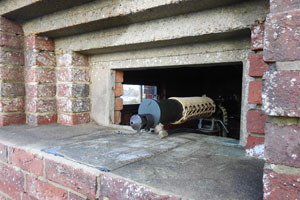
Bishopstone reveals its pillbox secrets
18 October 2021
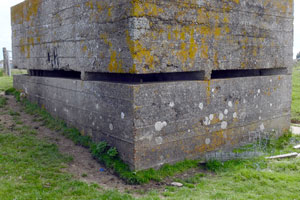
Pillbox or Observation Post?
10 June 2020
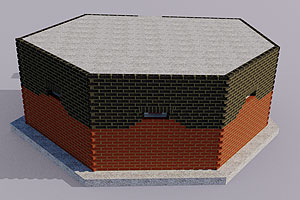
Uncovering the hidden secrets of a pillbox
8 June 2019
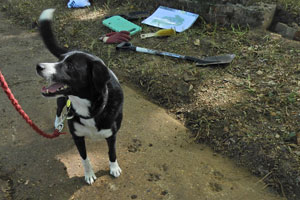
Review of 2018
31 December 2018

Wartime Christmas in East Sussex (2)
24 December 2018
Jargon-buster
Pillbox
Generic term for a hardened field defensive structure usually constructed from concrete and/or masonry. Pillboxes were built in numerous types and variants depending on location and role.

Pimples
Small anti-tank block in the form of a truncated pyramid. Pimples were used to extend anti-tank obstacles and roadblocks and were intended for use on soft ground.
This site is copyright © Peter Hibbs 2006 - 2024. All rights reserved.
Hibbs, Peter Fun with cement (2024) Available at: http://pillbox.org.uk/blog/245141/ Accessed: 27 July 2024
The information on this website is intended solely to describe the ongoing research activity of The Defence of East Sussex Project; it is not comprehensive or properly presented. It is therefore NOT suitable as a basis for producing derivative works or surveys!